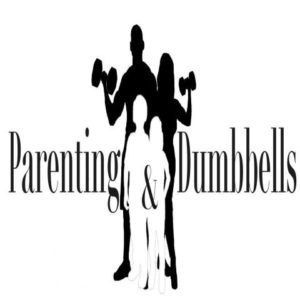Disclaimer: The information presented here should not be a substitute for professional medical advice from your healthcare professional. This is for informational purposes only. Consult with your personal doctor before starting any exercise routine and for any dietary needs you may have.
When most people start on their fat loss journey they tend to focus way too much on cardio.
We have seen people decide they want to lose some weight, get so excited and proceed to do hour long cardio sessions daily.
Not a good idea! But…
Is cardio actually necessary for fat loss? Here is the short answer: NO.
Can cardio aid in weight loss? Is it good for heart health? Can you lose fat without cardio?
YES. YES. AND YES.
But the topic is a little more involved than the above simple answers.
What exactly is cardio anyway? And what counts as cardio?
In this article we will explain:
- What cardio is
- Why it’s simply a tool, not a necessity, for fat loss
- Why it can be important
But before we get into it, just realize that any exercise is better than no exercise.
The American College of Cardiology recommends adults do at least between 150 to 300 minutes a week of moderate-intensity exercise. They also recommend adults engage in muscle-strengthening activities, like weight lifting, 2 or more days a week.
Let’s get into it!
What is cardio? And what counts as cardio?
Cardio is defined as any vigorous activity that raises your heart rate, oxygen flow and blood flow for an extended period of time using muscles in your body to move.
There are two types of exercising methods that raise your heart rate and can be considered cardio:
1. Aerobic activity relies more on the use of oxygen, and is sustainable for the necessary duration of the exercise. Think jogging, brisk walking or a comfortable run.
2. Anaerobic activity, like sprinting, HIIT (high intensity interval training) or heavy weight training, relies less on the use of oxygen and is not sustainable for a long period of time without rest. An example would be resting after a set of heavy weight lifting before going on to the next set. This is also why HIIT has the word interval in it. You do short burst of high energy movements, rather than continuous movements, for a short duration of time.
Cardio can be high intensity (HIIT training).
It can be low intensity (low intensity steady state), or it can be a combination of the two (jogging, comfortable run etc).
So what counts as cardio?
Cardio exercise examples include:
- Running
- Swimming
- Jogging
- Brisk walking
- Jumping Rope
- Circuit training
- Stair Climbing
- HIIT
- LISS
- Cycling
And a myriad of other activities. There are activities like dancing that, while not ordinarily done for cardiovascular purposes, elicit a cardiovascular response.
Even strength training, in its basic terminology, can be considered cardio.
As you can see, mostly any activity that gets your heart rate up can be considered “cardio”.
For the purposes of this article: when we refer to cardio, we are talking about aerobic cardio, like jogging, running comfortably or LISS (low intensity steady state cardio) that requires the extended use of oxygen for a longer duration.
Think, for example, walking on an incline, on a treadmill, for 45 minutes.
Why cardio is simply a tool, not a necessity for fat loss
The main driver of fat loss is a calorie deficit.
To lose fat you take in less calories than what your body requires.
More of this is explained in our The Best Fat Loss Diet for Parents post. In it we detail exactly how to lose weight on a calories in versus calories out model.
When talking about calories in versus calories out we always have to add the caveat:
this doesn’t mean eat whatever you want.
80% of the food you consume should be good food full of nutritional value.
To burn more calories than your body requires, one of two things, or both, must be done:
- reduce your food intake
- and/or add exercise.
The key word here is EXERCISE.
Exercise does not HAVE TO BE cardio.
Now remember, when we say cardio we are talking about low to moderate intensity cardio here within the “aerobic” definition.
It can be weightlifting. It can be a sport you play. It can be swimming
Exercise is an activity that will burn more calories than when you are at rest, requiring greater physical effort, and that will benefit your body and overall health.
You can lose weight by simply eating less. Or you can lose weight by adding in more exercise.
But the exercise DOES NOT HAVE TO BE CARDIO.
I always recommend people looking to lose fat to focus on a good strength training program, a solid diet, and to do minimal cardio.
Why?
Because in the world of building a pleasing physique and losing fat, cardio is last on the list of a must do!
To get that “beach body” you have to add some muscle to your frame, so when you lose the fat you look chiseled or “toned”. Otherwise you will simply look skinny.
On a side note: the word “toned” is misconstrued. When people say “toned” they usually preface it with “I don’t want to gain muscle I just really want to be toned” .
Um…that doesn’t really make sense!
“Toned” means the acquisition of muscle mass with a lean enough body fat level to be able to see those muscles.
That chiseled, athletic, “toned”, muscular …whatever look you’re going for … does not come from traditional cardio.
It comes from other forms of exercising, most predominantly weightlifting, and dieting.
So why is cardio simply an extra tool when losing fat?
- Because it can speed up the fat loss process.
- Because it can help the fat loss process
If you are in a calorie deficit, are exercising in other ways, and then add in cardio, yes, you will lose weight at a faster rate. Or maybe you want to eat a little more and keep dropping pounds. In that case, cardio can be strategically programmed into your workout regimen as a tool to allow you to do so.
But you DON’T NEED IT.
But what about for health reasons?
Well here is the thing.
If you are following a consistent exercise regimen, and regularly getting your heart rate up doing so, you are reaping health benefits from that alone.
Strength training on it’s own has been shown to help decrease blood pressure and improve circulation, which is beneficial for the overall health of your heart.
And let’s not forget that when you are strength training, you are also burning calories which helps in a fat loss phase.
Building muscle also helps your body actually use those calories before storing them as fat, as building and maintaining that muscle requires a certain amount of calories.
If someone were looking to improve their health, look and feel better, it is safe to say that strength training with a good nutritionally dense diet would be the way to go before spending hours on a treadmill.
Why cardio can be important
Cardio can be important for three reasons:
1. It’s a good starting point
If you were to take an overweight individual, the concept of slow and steady state cardio can be a great tool to start him or her on an exercise regimen.
Rather than throwing an inexperienced, older, or overweight person into the weight room to squat and deadlift, introducing them to longer simple walks that eventually get their heart rate up, more than they are use to, is a great way to start them off.
2. For additional hearth health
Cardio helps improve your blood flow.
Since your heart pumps more blood while performing cardiovascular activity, this improves the blood flow around the small vessels of your heart where fatty deposits can build and contribute to heart disease, heart attacks etc.
Cardio will help your heart and lungs become more efficient.
Now we say for additional heart health because as stated above, if you are on a real and consistent exercise regimen, you are reaping most of the health benefits and some extra ones already.
3. To aid in fat loss
As stated before, cardio is not necessary for fat loss. However, it can help.
Say for example you are on a 2,200 calorie diet. All you are doing is weightlifting 5x a week and following this diet.
For the first month you are consistently losing 2lbs per week and you are beyond excited!
After a month you notice you have plateaued.
At this point something has to change.
This is when you can use cardio as a tool.
If you haven’t been doing it, maybe adding two 30 minute sessions a week can help you get back to dropping pounds. And even then, if you decide to opt out of cardio you can simply reduce the amount of calories you’re eating and you will continue to drop the weight.
To Conclude:
Cardio is not bad. It is actually very beneficial and good for you, but cardio is an option to aid in weight loss. Not a necessity.
If your preferred and only form of exercise is cardio, then it is certainly beneficial and necessary for good heart health and weight management.
When we say cardio isn’t really a necessity, we are saying this in the context of an individual already having an active lifestyle. Don’t shy away from cardio, just realize it is not the only way to stay and get in shape.

